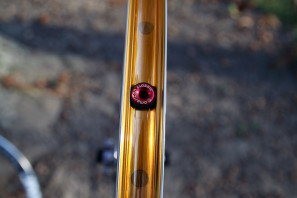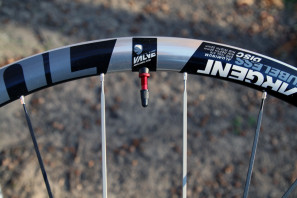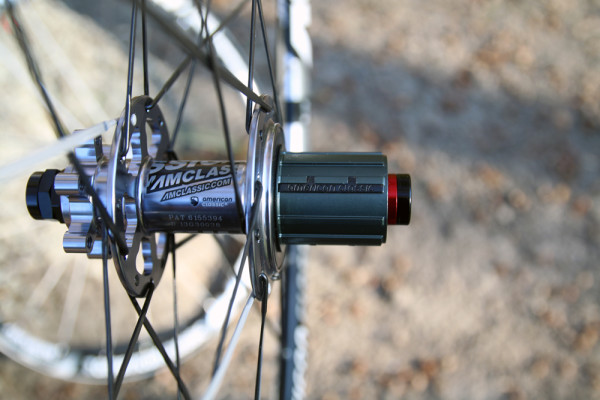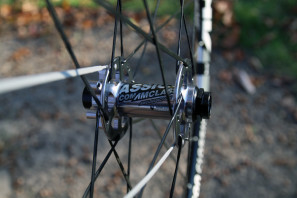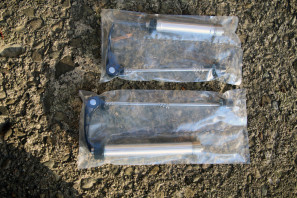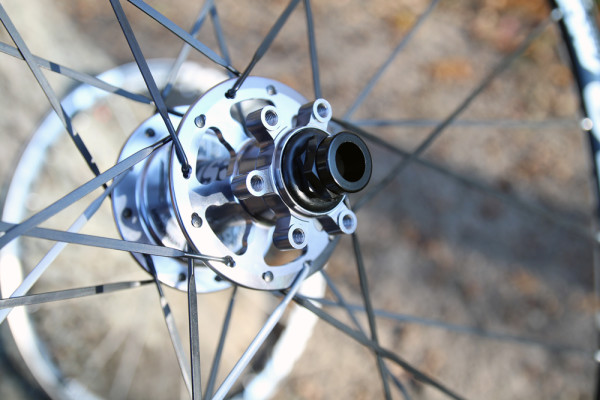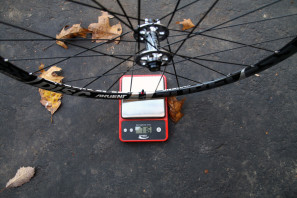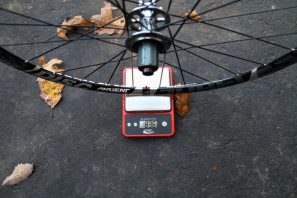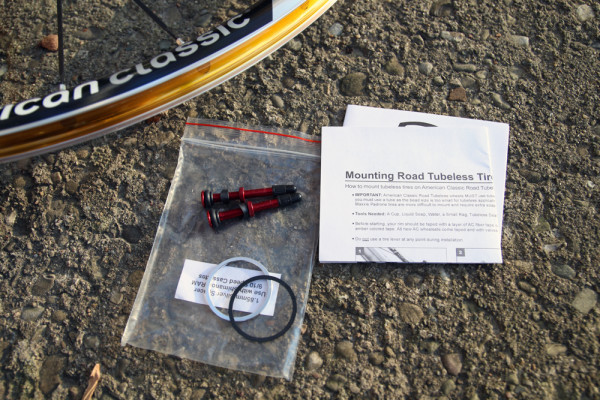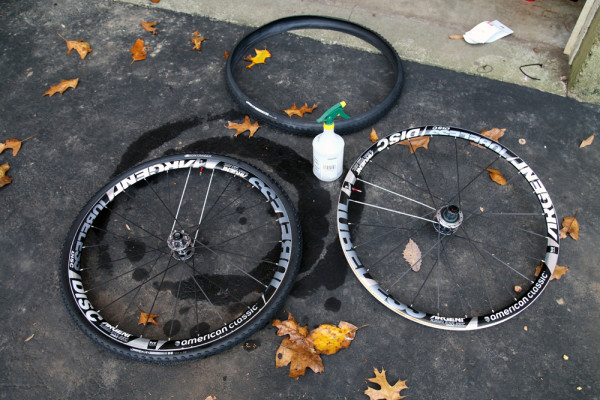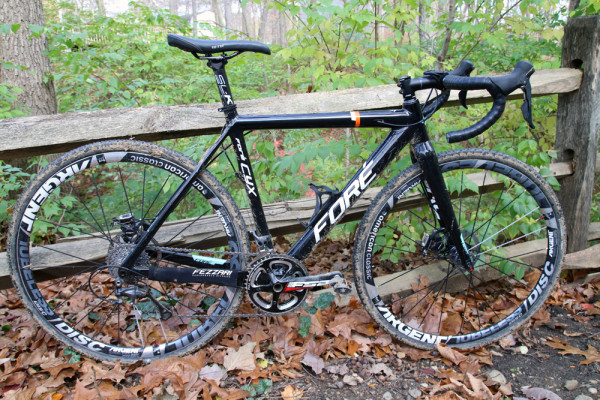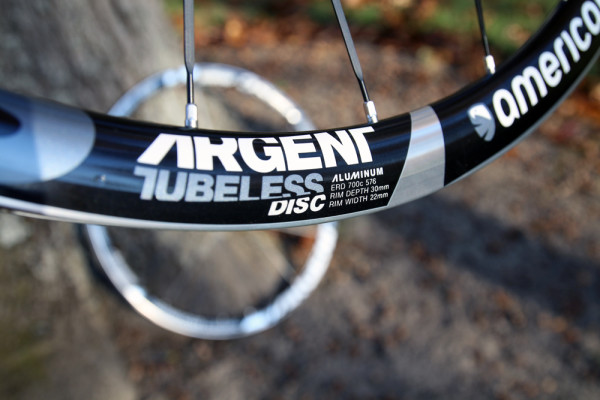
Ask most serious cross racers what equipment they’re running and disc brakes are becoming much more prevalent. But tubeless? It seems that many still cast a dubious eye towards the tires that stay on the rim without any glue.
Like anything though, with time products continue to improve. Thanks to the introduction of improved tubeless cyclocross tires, the feasibility of racing tubeless seems better than ever.
This is where products like the American Classic Argent Tubeless Disc wheels come into play. One of the biggest advantages of tubeless over tubulars is the ability to quickly change out tires based on conditions without having to have multiple wheelsets glued up. For the average privateer that means the ability to run race worthy wheels and tires without a huge investment.
Details, actual weights, tubeless set up, and more next…
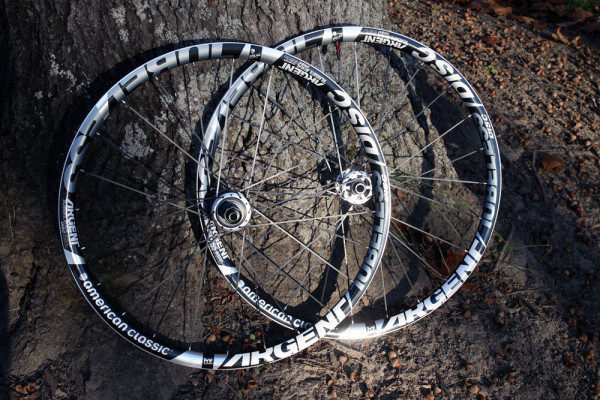
Known more for their metal rims rather than carbon (though that is starting to change), the American Classic Argent Tubeless Disc continues with wide aluminum rim with a claimed weight of 390g. Measuring in at 22/19.4mm wide (ext./int.) and 30mm deep, the Argent’s weight is even more impressive thanks to the generous dimensions.
It’s the width of the rim combined with American Classic’s Bead Barb system that results in a secure fit of the tire that allows running low pressures without burping. The rims come shipped with American Classic’s Tubeless Honey Tape installed which just leaves the installation of the AC tubeless valve to set them up tubeless. Like most tubeless wheels, if you get a flat or just decide not to run tubeless the wheels can be run with standard tubes and tube type tires.
Cyclocross is especially hard on hubs so racers will be happy to see the AM Disc 130 and Disc 225 units in the center of the Argent wheels. I say that for a few reasons. First, one of American Classic’s best hub features is their Steel Face cassette body technology. Aluminum cassette bodies are light, but terrible for holding up to cassettes with split cogs. Anyone who has had to file down an expensive freehub body to get a different cassett to slide on knows this all too well. AM makes it a non-issue with steel inserts strategically placed on the aluminum freehub body so that the cassette splines won’t dig in. Simple, but brilliant.
Inside the freehub you’ll find AM’s 6 pawl cam actuated engagement system which engages all 6 pawls at once. Using a secondary ratchet system, the pawls only engage when putting the power down allowing for smooth coasting. The 6 pawls each have two tips for 12 points of engagement on the 24 ratchet teeth. Basically it’s a very quite hub that offers excellent engagement when you want to go.
Another noteworthy hub feature is hidden in the axles. Thanks to the design of the axles and hub adjusters, the ends of each thru-axle hub will not move unlike other designs that rely on end caps held in place with o-rings. This makes wheels changes much easier since you don’t run the risk of knocking the end cap out of place when trying to center the wheel. The design also allows for the use of standard QR axles with separate axle inserts. Key to our use with the Fezzari Fore Cyx was their ability to run 15mm TA front and 142x12mm TA rear.
Both 6 bolt hubs get laced to the aluminum rims with AC Bladed spokes with aluminum nipples in a 2 cross pattern front and rear. Whether you call it cosmetic or a race feature, the wheels use two different color spokes to help you find the valve as quickly as possible.
Even with the tubeless tape and valve installed, the Argent wheels are impressively light at 716g for the front and 836g for the rear. Without the tape and valves, the wheels would easily be within claimed weight of 708/823g. Included with the wheels are of course the tubeless valves and tape, but also a silver spacer to use for SRAM/Shimano 10 speed cassettes on the 11 speed freehub body, and a black spacer which is required for running Campagnolo 11 speed cassettes.
Along with the few extra parts, Argent wheels ship with concise instructions for setting up tubeless tires. Judging by how much they stress following the directions, it seems like it’s very important to their performance so just read the instructions OK?
Now that you’ve read the instructions you’ll know that AM wants you to use ample amounts of soapy water on the tire and rim before mounting. I used a spray bottle with a soap and water mixture to liberally coat both the rim and tire, then mounted the Bontrager TLR tire per the instructions. Even without sealant the tires mounted up surprisingly well, snapping into place with ease. Next, you let out the air, pull the valve core and inject sealant through the valve then re-inflate the tire. Honestly as far as road tubeless set ups go, this has been the best as far as instantly seating and not losing pressure over time.
Following a dramatic shift in the weather and the realization that mud tires were going to be more useful than file treads, I needed to swap 4 tires between two wheelsets. After 30 minutes and little mess, the tires were swapped and I was back out to the races. Score one for tubeless.
That brings us to the question – just how do tubeless tires perform for cross? After a handful of races all on tubeless wheels with some very technical off-camber, high speed, bunny hopping, and other cross challenges I’ve yet to burp a tire of feel like I need to run lower pressures. Granted, I weigh 150 lbs with my kit and have more technical skills than power, but for me the set up is working great.
Likely due to their wider profile the Argents often feel like the tires are much lower PSI than they actually are, but I’ve still raced them down to about 22 PSI without issue. Until they give me a reason to otherwise, I’ll be sticking with tubeless for cross from here on out. As for the Argent Tubeless discs? If you’re looking for a lightweight, race worthy wheelset for cross or for your disc brake road bike, the $1,499 Argents are an easy choice.
